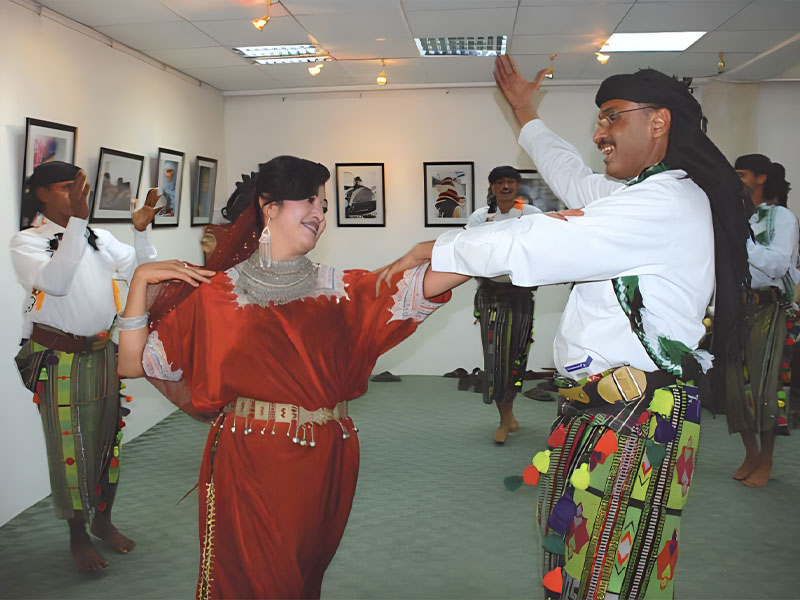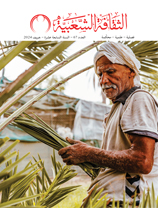Afro-Yemeni Dances A research of the African origins of the musical Yemen
Issue 5

Nizar Abdo Ghanem - YEMEN
Naturally, this was a bridge in which cultural influences, like the expressive and performing arts like music, dancing and singing, passed by in the two directions. Moreover, we cannot omit slavery trade as an independent economic activity that still exists in the modern age but totally disappeared in the 20th century as a result of the attacks driven by the British colonial against this trade. Who knows, ethnomusicology scientists can success one day in presenting a complete panorama of the co-culturing between the shores of the peninsula and the Negro land, so that an exhaustive study can be elaborated in which all details are examined and empirically analyzed employing all knowledge and skills of the ethnomusicology. In gulf countries, including the south of Iraq, many studies of these (afro-gulf) dances were presented starting from the 60s of the 20th century, conducted by local researchers, Arabs, and orientalists. Generally, books of the Arabic patrimony explicit the relation between black people and joy. In the Prophetic tradition, the Prophet Mohamed understands the Negro innate tendency towards dancing. In his book (Arabs and Ethiopia), Mohamed Abdelmajid Abidin has confirmed that Hijazi Arabs took from Ethiopia the ‘Hajle’ dance, hence the rootage of the penetration of the negro performative arts to the peninsula. Nassir-Eddine Assad has mentioned in his book (female singers and singing in pre-Islam) that the name of the female singer ‘qayna’ is derived from the name of a musical instrument called ‘qaniin’ (mandolin) in Ethiopic. In this context, I remember a new view that I heard from the Sudanese researcher Badreddine Abderezaq (2) in a conference presented in Sinai in 1990, in which he mentioned that the Ethiopian mandolin was known in the age of the Prophet Mohamed and that Bilal the muezzin of the Prophet had been playing with it, and for this he was called ‘abu Tanabir’ and ‘abu sanajik’. This researcher added that the when Prophet had asked Bilal why he was attached to this instrument, he responded that it remembers him the time of the prayer. For this reason, the prophet had not prohibited him from plying with it. The researcher stresses that all the Negro origin assemblies in Yemen lost in time their ethnic ties with Africa, and have became totally Yemeni. By analogy, the arts of ancestors presented today has undergone deletion and adding applying the Anthropological famous statement that civilizations when they borrow external cultural components, they simultaneously reproduce these components and wear them new cloths and invented elements incorporate ultimately the incoming completely in the cultural contour and the new social context. The researcher provides details for musical instruments, name of dances, and how the transfer of these instruments and dances from a region to another causes differences in performance and modifications in some rhythms. The researcher refers to a number of references dealing with transfer and adaptation like the Ostrich orientalist Japer wella Browen assumption that the terza rima (muwachah) carries Yemeni prints. At the end of the search, the researcher presents a list of important references that promise an interesting adding to those who are interested to music and dancing and their history in Yemen and their affection with contour and structures.




































































